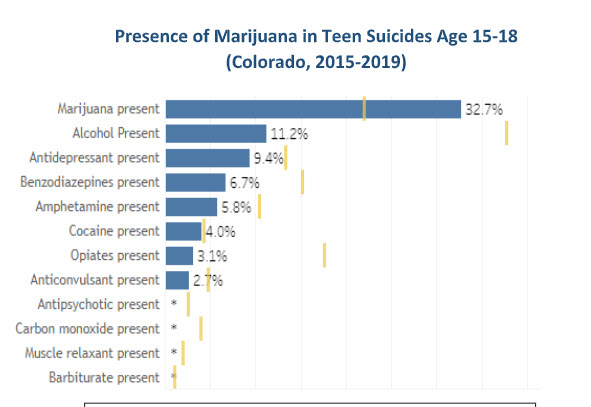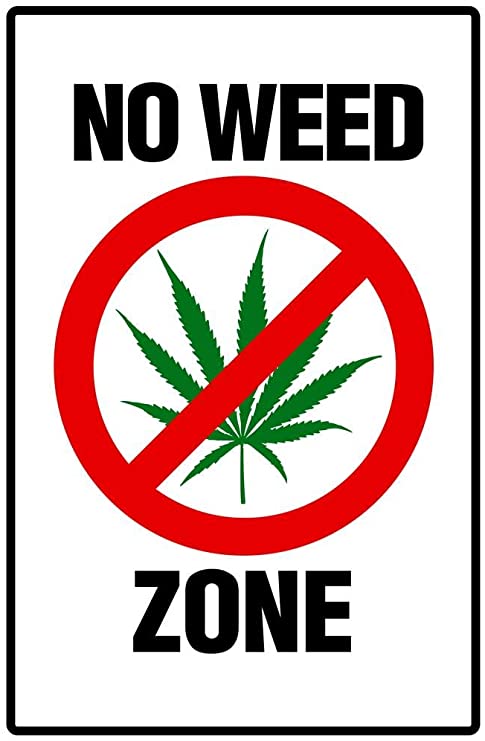Teens are getting the wrong message about marijuana and mental health
The radio ads have started – April 20 is coming and dispensaries throughout the county are offering discounts and events for the annual ‘holiday’ celebrated by marijuana consumers from coast to coast.
While many of us are trying to keep kids drug free, Vista Unified has made this April 20 a non-student, professional development day so parents are left to make their own plans for their kids. The North Coastal Prevention Coalition provides one healthy option from 3-6 p.m. – their annual 420 Remix event celebrating sober and drug-free life choices at Boomers in Vista. Though only free this year for students who entered their PSA contest, Boomers is open to the public and families are welcome.

As a peer leadership teacher at Rancho Buena Vista High School, I encourage parents to use this opportunity to have conversations with their kids about marijuana and the risks it poses to adolescent brain development and their future mental health.
Teaching peer leadership, I have the opportunity to guide students in developing decision-making, communication and leadership skills. We discuss many topics that affect them and their peers—relationships, family conflict, bullying, identity and substance use.
When marijuana comes up in class, I hear teens repeat many misconceptions and mistruths – that marijuana is safe because it’s ‘natural,’ that it’s not as dangerous as other drugs, and that it can help with anxiety, depression and insomnia. Some also share that their parents or friends’ parents use marijuana and they would be more concerned if their kids drank alcohol than used weed.
These misconceptions aren’t just wrong, they’re dangerous for teens.
A National Institutes of Health study analyzed a survey of over 280,000 young adults aged 18 to 35, showing that marijuana use was associated with an increased risk of suicide, a suicide plan and a suicide attempt. The study showed that “even people who used cannabis nondaily, fewer than 300 days a year, were more likely to have suicidal ideations and plan to attempt suicide more than those who did not use the drug at all.”
In 2020 the San Diego County Medical Examiner reported 39% of completed suicides in ages under 25 tested positive for THC, more than for alcohol. San Diego County collects public health data on how marijuana is affecting youth locally and you can view current data at this link https://www.dropbox.com/s/auncpkeez8ukx2k/2020.2021%20MPI%20Report_Final_County_Approved_1.25.2022.pdf?dl=0
In Colorado—the first state to legalize the commercial sale of marijuana—the teen suicide rate increased by 58% between 2016-2019, the largest rate increase in the country according to the United Health Foundation.
For teens in Vista, marijuana is now the most used substance among their peer group. Before COVID, 15% of juniors and 25% of nontraditional students reported using marijuana in the past month (VUSD CHKS, 2019). Smoking and vaping were the most common ways they reported use.
There’s some good news in those statistics – 85% of juniors and 75% of nontraditional students did NOT use marijuana. But they don’t perceive much risk – fewer than half of juniors believe daily marijuana use is harmful. Just as we’ve succeeded in lowering youth use of tobacco and alcohol, we must also commit to preventing youth marijuana use.
This is where parents make a big difference. Teens who believe that their parents will respond negatively to their drug use are less likely to use alcohol, nicotine, marijuana and other drugs. While other factors, like peers who use drugs, can influence a teen’s decisions, parent expectations of drug use and enforcement of drug-free rules significantly reduce teen use.
It may be decades before health officials, regulators, or political leaders take serious action to prevent youth marijuana use and impose public health protections like advertising restrictions, potency limits, compliance checks to prevent sales to minors, and product restrictions that reduce the appeal to youth.
Your kids need you now. Share your concerns, set rules and expectations against all substance use, impose consequences if necessary, and stay informed. Talk to your children about drugs, making sure they know that most teens don’t use drugs, and you expect them not to use drugs. And more than anything else, make sure they know that you love them.
Get guidance and tips online:
https://drugfree.org/article/how-to-talk-about-marijuana/
https://www.addictionpolicy.org/10-things-parents
https://onechoiceprevention.org/drug-prevention-what-can-parents-do
Tim Leary is a government and peer leadership teacher at Rancho Buena Vista High School in Vista


















